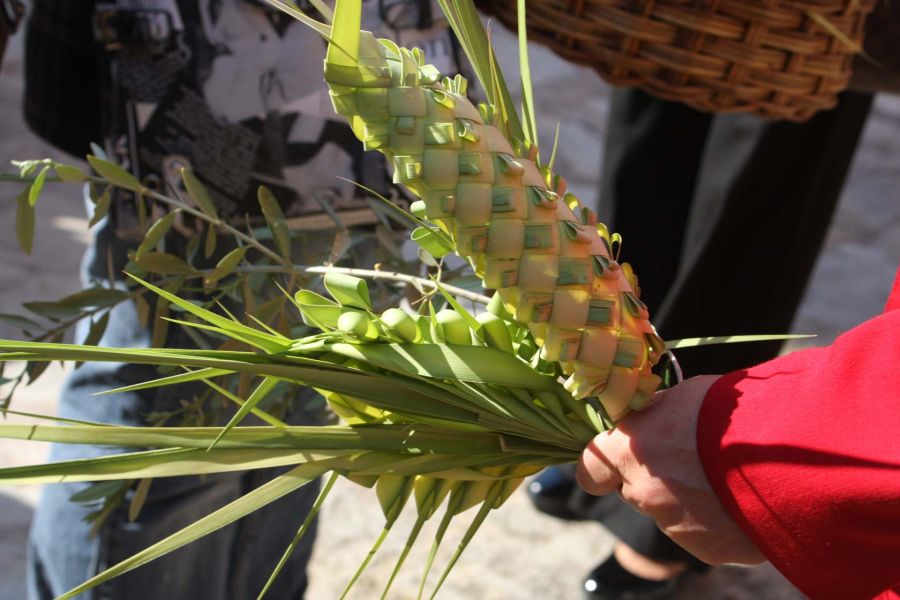Easter in Corsica: Festivities and traditions
Marking the beginning of the tourist season, Easter is one of the most important festivities in Corsica, commemorating the resurrection of Jesus Christ. The program? Crucette, Lavanda, Cerca, Granitula, Merendella and Cacavellu; as many traditions as we will explain.
Marking the beginning of the tourist season, Easter is one of the most important festivities in Corsica, commemorating the resurrection of Jesus Christ. The program? Crucette, Lavanda, Cerca, Granitula, Merendella and Cacavellu; as many traditions as we will explain.

« E Crucette » :
The Holy Week begins on the Sunday before Easter Sunday, also known as Palm Sunday, in the days before, the inhabitants gather to make the Crucettes ("small crosses") with palms, they are also in the shape of fish, stars and various animals. A moment of great conviviality and learning that brings together youngsters and elders. On Palm Sunday each person brings his bouquet of Crucette and olive branches to the church to have them blessed, before dispensing them to family and friends, as a lucky bet for the coming year. They are hooked in houses, cars and even at the entrance of the vegetable garden for the divine blessing of the crops.
« Lavanda and blessing of the canistrelli » :
U Ghjovi Santu (Calvary Thursday) in Calvi is marked by the traditional A Lavanda, ceremony of the feet washed by two brotherhoods of Saint Antoine and Saint Erasme. Followed by the blessing of the canistrelli (corsican biscuits).
Procession of « A Cerca » :
On Good Friday in the procession of the Cerca of the two brotherhoods of the city, the body of the Christ and the Virgin of sorrows are transported from the citadel to the lower town. This procession is punctuated with halts in several churches accross the city, accompanied by sacred complaints intoned by the confreres and the faithful.
Procession « A Granitula » :
On the evening of the Good Friday, by the flickering light of the candles that local people lay on their windows, the procession composed of the two brotherhoods slowly evolves. At their head, the penitent, wears a hood (to protect his identity), ankles unchained and walking barefoot, he carries the cross on his back. He leads the procession in order to be forgiven of his sins. He advances painfully to the throbbing sound of "Perdono mio Dio; Mio dio perdono; Perdono mio Dio; Perdono è Pietà ». Its identity will remain secret, only a few will know who he really is and it is considered a real privilege to be chosen, each year.
From the citadel to the lower town, stops are made in front of each church and start moving in circle.
In the Corsican language "Granitula" is a small marine snail whose shell is spiral in shape, referring to the confreres who spiral in front of each square.
« A Merendella » :
A Merendella is a tradition that has been perpetuated in Corsica for centuries. For Easter Monday, families gather for a picnic in the nature. The tradition gather the generations around a convivial meal while enjoying the wonders that Corsican nature offers in spring.
« U Cacavellu » :
The Corsican Easter cake, the Cacavelli are crowns of sweet bread, in which one we slip hard whole eggs. They mark the end of the Lent. Generally it is eaten during the weekend of Easter, in dessert after the pascal lamb. In Calvi the traditional Easter cake is the Canistrellu.
Bone feste di Pasqua e bona Simana Santa a tutti !*
* Happy Easter and happy holy week !

















